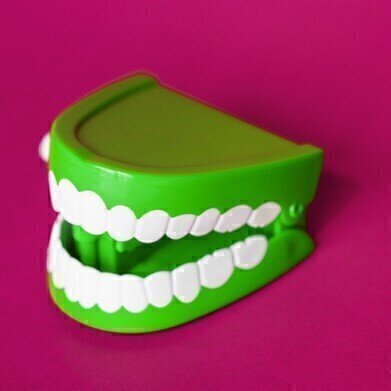LC-MS
Are Your Fillings Safe? — Chromatography Investigates
Jun 25 2018
Being a child of 1960s Britain means different things to different people. Flower power, beatnik and hippies or the Vietnam War and its consequences. For me it means bad teeth and a mouth full of fillings. Then fillings were made from amalgam — a metal alloy of mercury, silver and copper that has been used for centuries to fill holes in teeth. There is no proof that the mercury in them can leach and cause other medical problems — but scare stories remain.
Composites in your mouth
More recently, composite materials are used to fix our teeth and make our smiles straight. Composites have many advantages over amalgams, particularly in that they can be made to match the colour of existing teeth, hence making them more discreet.
A dental composite is simply a coloured plastic and glass mixture that can be used in various dental applications — including as an alternative to amalgam. Because composites can be coloured to match the existing teeth, they are also used for cosmetic applications to improve smiles. But there are potentially other issues with composites used in dentistry.
Bisphenol A — ubiquitous in life
Bisphenol A, or BPA, is found in plastics that we use every day. BPA is an important monomer and is commonly used in many polycarbonate applications. From sports equipment to compact discs to dental composites — there is no getting away from BPA. Alongside its use as a monomer it also acts as an antioxidant or polymerization inhibitor.
It was in the late 1990s that concerns about BPAs effect on animals was first raised — primarily because of its ability to mimic the affects on estrogen in humans and animals. This is due to the two functional phenol groups on both BPA and estradiol. Subsequently, you now see ‘BPA free’ stickers on many of the plastic food items like water bottles that you can buy. But what about your fillings — are they BPA safe?
BPA from the dentist?
It has been reported that BPA has been found to leach from some composite dental materials — so a team from Norway set out to see whether leaching of BPA occurs immediately after treatment and two weeks later. In a report published in the journal Acta Biomaterialia Odontologica Scandinavica — Presence and leaching of bisphenol a (BPA) from dental materials — they discuss how they used liquid chromatography to see what’s leaching from our fillings.
Liquid chromatography can be used for many different applications — one discussed in this article, Utilisation of LC/MSMS (QTRAP) and Polarity Switching for the Quantitative Analysis of Over 300 Pesticides in Crude QuEChERS Extracts from Various Fruit and Vegetable Matrices — involves keeping our fruit and veg safe to eat.
They found no significant differences in the amount of BPA that leached from the composites tested after 24 hours compared to those tested after two weeks. The levels they recorded were also very low and they suggest that they represent only a very small contribution to our overall BPA exposure.
Keep smiling.
Digital Edition
Chromatography Today - Buyers' Guide 2022
October 2023
In This Edition Modern & Practical Applications - Accelerating ADC Development with Mass Spectrometry - Implementing High-Resolution Ion Mobility into Peptide Mapping Workflows Chromatogr...
View all digital editions
Events
Apr 23 2024 Kintex, South Korea
Apr 23 2024 Seoul, South Korea
Apr 28 2024 Montreal, Quebec, Canada
May 05 2024 Seville, Spain
May 15 2024 Birmingham, UK














